Links to external sources may no longer work as intended. The content may not represent the latest thinking in this area or the Society’s current position on the topic.
Heat and carbon uptake in the Southern Ocean: the state of the art and future priorities
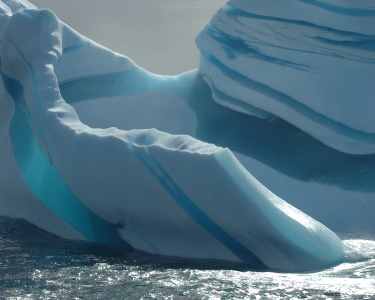
Scientific discussion meeting organised by Dr Andrew Meijers, Professor Corinne Le Quéré CBE FRS, Dr Pedro Monteiro and Dr Jean-Baptiste Sallée.
There have been significant advances in observing and modelling the Southern Ocean in the past five years. Results from new autonomous observing platforms and large national programmes have challenged our understanding of the role of the Southern Ocean in global climate. This meeting brought together physical oceanographers, climatologists and carbon scientists to synthesise insights across disciplines and identify future challenges.
Recordings of the presentations are available below. An accompanying journal issue has been published in Philosophical Transactions of the Royal Society A.
Watch the video playlist
Click watch on YouTube to view the full video playlist.
Enquiries: contact the Scientific Programmes team
Organisers
Schedule
Chair

Professor Corinne Le Quéré CBE FRS, University of East Anglia, UK

Professor Corinne Le Quéré CBE FRS, University of East Anglia, UK
Professor Corinne Le Quéré FRS CBE, is Royal Society Research Professor at the University of East Anglia, where she conducts research on the interactions between the carbon cycle and climate change, particularly those mediated by the world’s oceans. She leads two projects in the NERC’s programme on the Role of the Southern Ocean in the Earth System (RoSES), one examining Southern Ocean CO2 variability in recent decades, one exploring its evolution this century. More broadly, she spearheaded the development of marine carbon-cycle models with new ways to represent plankton diversity and ecology. She also led for over a decade the annual update of the ‘global carbon budget’, an international effort to keep track of global carbon emissions and their fate in the environment, and authored three assessment reports of the Intergovernmental Panel on Climate Change (IPCC).
| 08:00 - 08:05 | Welcome by the Royal Society & lead organiser |
|---|---|
| 08:05 - 08:30 |
Six years of the ORCHESTRA Southern Ocean heat and carbon project, where are we now?
ORCHESTRA (Ocean Regulation of Climate by Heat and Carbon Sequestration and Transports) and its extension project ENCORE was a six year, ~11-million-pound programme involving seven UK research centres that finished in March this year. It sought to radically improve our ability to measure, understand and predict the circulation of the Southern Ocean through a series of milestone observational campaigns in combination with model development and analysis. Eleven cruises in the Weddell Sea and South Atlantic were undertaken, along with mooring, glider and profiler deployments and air-sea heat and carbon flux measurements from ships and aircraft. Numerous forward and adjoint experiments, looking at ocean heat content sensitivities, were developed and supported by analysis of coupled climate models. ORCHESTRA/ENCORE has resulted in around 100 publications so far and this talk by the programme Principal Investigator will take a whistle stop tour through highlights of the programme including: The discovery of a declining trend in AABW production due to wind driven sea ice change, new insight into the drivers of mode water formation variability, surfactant impacts on air-sea gas exchange and air-sea fluxes driving SST biases in climate models. It will assess the progress achieved by ORCHESTRA, as well as ongoing and newly opened questions for future research. 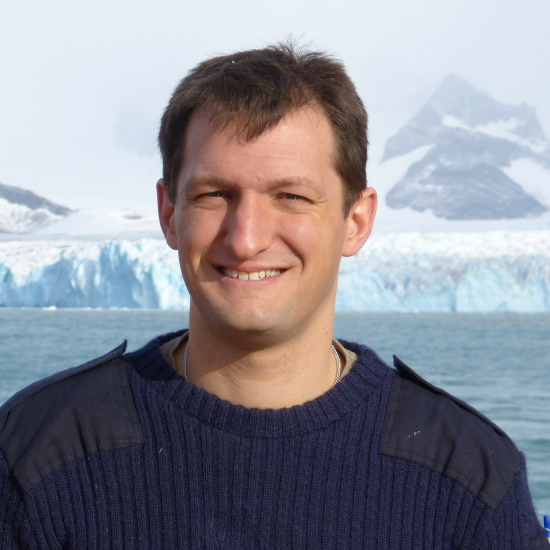
Dr Andrew Meijers, British Antarctic Survey, UK

Dr Andrew Meijers, British Antarctic Survey, UKDr Andrew Meijers is the Deputy Leader of the British Antarctic Survey's Polar Oceans programme. His research centers around large scale Southern Ocean dynamics and water mass evolution, with an emphasis on its representation within CMIP class coupled climate models. He was the PI of the large UK ORCHESTRA programme and its extension ENCORE, examining the uptake, storage and export of heat and carbon in the Southern Ocean. He oversaw the combined efforts of scientists from six UK research centres and a large observational and modelling programme over six years. He has undertaken numerous research voyages in the Southern Ocean, often as Principal Scientist, and looks forward to returning to the field soon! |
| 08:30 - 08:45 | Discussion |
| 08:45 - 09:15 |
SOCCOM's paths towards understanding heat and carbon in the Southern Ocean
The ten-year SOCCOM (Southern Ocean Carbon and Climate Observations and Modeling) program, which started in 2014, has had at its core the improvement of global climate understanding and prediction through improved observation and modeling of Southern Ocean processes south of about 30°S. SOCCOM’s principal focus is the ocean’s role in the carbon cycle from the sea ice zone through the subtropics, proceeding on three disciplinary fronts: physics (heat, freshwater and buoyancy; transport processes), biogeochemistry (principally carbon and oxygen), and biology (productivity). Three major toolsets have been employed: (1) direct observations (profiling biogeochemical (BGC) Argo-type floats supplemented with core Argo), ocean state estimation, and climate modeling. (1) SOCCOM has pioneered broad use of 5-sensor BGC Argo floats, deploying 221 floats throughout the Southern Ocean since 2014, with 108 currently active. SOCCOM pioneered and remains central to continuing development of the algorithms that connect the float-measured parameters to those of the full carbon budget. The float data and derived parameters are being widely used for analyses of spatial and temporal processes that were heretofore undescribed, including full annual cycles of BGC and biology from the ice-covered high latitudes to the Southern Hemisphere subtropics. The data are now numerous enough to contribute to climatology construction. (2) The BGC float data have been incorporated as constraints in the 4DVar Southern Ocean State Estimate used in SOCCOM, which developed a BGC adjoint. B-SOSE outputs are widely used within and outside SOCCOM to assist with analysis of the direct measurements, and to provide closed budgets that can be used to study underlying ocean physics and biogeochemistry. (3) Coupled climate and ocean-only models have been employed to study the Southern Ocean’s evolution under climate change, representing and elucidating patterns and mechanisms of heat and carbon uptake, and their associated changes in circulation, sea ice, and acidification. 
Professor Lynne D Talley, Scripps Institution of Oceanography, USA

Professor Lynne D Talley, Scripps Institution of Oceanography, USALynne Talley is a Distinguished Professor of Physical Oceanography at Scripps Institution of Oceanography, University of California, San Diego. Talley’s research focuses on the general circulation of the ocean and the role of various oceanic and atmospheric conditions that affect ocean currents and property distributions, and the role of the ocean in climate. Talley was a lead author of the IPCC Fourth and Fifth Assessment Reports Working Group I chapters on ocean observations. Her particular emphasis over the last decade has been Southern Ocean processes. Since the 1990s, she has been a principal investigator for global ship-based hydrography, now GO-SHIP. In recent years, she has been a principal investigator for the NSF-funded SOCCOM and GO-BGC programs, which are pioneering a global array of biogeochemical Argo floats. Talley has authored or co-authored more than 155 publications and is lead author of a physical oceanography textbook. |
| 09:15 - 09:30 | Discussion |
| 09:30 - 10:00 | Coffee |
| 10:00 - 10:30 |
The role of eddies in Southern Ocean heat and carbon uptake
Eddies impact the uptake and northward export of anthropogenic heat and carbon in the Southern Ocean through a variety of mechanisms. These include eddy-driven subduction across the base of the mixed layer, deep-reaching ventilation associated with submesoscale dynamics, isopycnal diffusion, and the influence of eddy-driven advection on the overturning circulation and stratification. This review talk will summarise recent observational and modelling advances in our understanding of the dynamics and impact of each of these mechanisms on Southern Ocean heat and carbon uptake. Finally, model simulations of varying resolution will be compared to assess whether the net impact of resolving eddies has a robust imprint on future projections of Southern Ocean heat and carbon uptake. 
Dr Adele Morrison, Australian National University, Australia

Dr Adele Morrison, Australian National University, AustraliaAdele Morrison is an Australian Research Council DECRA Fellow at the Australian National University. Her research focuses on understanding how small-scale ocean dynamics impact the larger-scale ocean circulation and global climate. She uses high resolution models to study feedbacks in the Southern Ocean and around the Antarctic continental margin under changing climate forcing. Prior to her current position, she was a Postdoctoral Fellow at Princeton University for three years and obtained her PhD from the Australian National University in 2014. She was the recipient of the 2018 Meyers Medal from the Australian Meteorological and Oceanographic Society and the 2020 L’Oreal-UNESCO For Women in Science Award. She is currently a Program Leader for the Australian Centre for Excellence in Antarctic Science and a member of the International CLIVAR Ocean Model Development Panel. |
| 10:30 - 10:45 | Discussion |
| 10:45 - 11:15 |
Results and insights from the SO-CHIC project (Southern Ocean Carbon and Heat Impact on Climate): processes and long term change

Dr Jean-Baptiste Sallée, LOCEAN-IPSL, CNRS, Sorbonne Université, France

Dr Jean-Baptiste Sallée, LOCEAN-IPSL, CNRS, Sorbonne Université, FranceDr Jean-Baptiste Sallée is a Physical Oceanographer and Climate Scientist working for the French national research organisation CNRS and he is based at Sorbonne University in Paris in the department LOCEAN-IPSL. Jean-Baptiste Sallée and his group are interested in the dynamics of the ocean and climate with active research efforts on the study of the Southern Ocean surface layer and its impact on the global ocean circulation. His research mostly focuses on the observational connection between the ocean surface and the deep ocean interior, with particular emphasises on heat, salt and anthropogenic carbon sequestration in the Southern Ocean. In the past five years, Jean-Baptiste Sallée has been a member of the Southern Ocean Observation System (SOOS), a lead author for the sixth Assessment Report of the International Panel for Climate Change (IPCC) and has led a number of large research consortium investigating the functioning of the Southern Ocean. |
| 11:15 - 11:30 | Discussion |
Chair

Dr Pedro Monteiro, CSIR-CHPC, South Africa

Dr Pedro Monteiro, CSIR-CHPC, South Africa
Dr Pedro M S Monteiro is a Chief Oceanographer at CSIR in South Africa in the Southern Ocean Carbon-Climate Observatory (SOCCO). He has a special interest in understanding the processes and dynamics that link ocean physics to CO2 variability on synoptic to interannual scales and using this to contribute towards reducing the uncertainties and biases in oceanCO2 reconstructions. The use of high-resolution numerical modelling and ocean robotics as experimental platforms, to examine the scale sensitivities of Southern Ocean coupled physics – CO2 to climate variability and change, is a key focus. He was a Coordinating Lead Author for the Carbon chapter 5 in AR6-WG1 and a member of the Joint Steering Committee of the WCRP.
| 12:30 - 13:00 |
Mind the gaps: Towards a clearer view of Southern Ocean air-sea interaction
In this talk, Simon Josey will discuss progress in our understanding of air-sea interaction in the Southern Ocean with a focus on the past decade. During that time, the first multi-year, high quality observations of air-sea heat exchange have been made using surface flux reference moorings at two sites (south of Tasmania and upstream of Drake Passage). The new insights that these moorings have provided will be explored with a focus on interannual variability. A second major development has been the characterisation using ship-based measurements of surface fluxes across the marginal ice zone separating the open ocean from full sea-ice cover conditions. These measurements will be reviewed together with new results from ongoing work that seeks to determine the role played by ocean-atmosphere heat exchange in the marginal ice zone for the wider Southern Ocean system. Finally, variability in the heat and momentum (wind stress) fluxes across the Southern Ocean as whole will be assessed using both atmospheric reanalysis datasets (eg ERA5) and climate models (eg HadGEM). A particular focus will be on changes in the wind stress and buoyancy flux as Southern Ocean wind stress has been suggested to have strengthened and moved polewards in recent decades, and the question arises as to whether this process is continuing. 
Professor Simon A Josey, National Oceanography Centre, UK

Professor Simon A Josey, National Oceanography Centre, UKProfessor Josey's research is primarily concerned with ocean-atmosphere interaction via heat fluxes and wind forcing. These processes influence many aspects of the Earth system ranging from the deep ocean circulation to climate change. In his work, he uses both complex ocean-atmosphere computer models and a broad range of observations, for example surface flux research stations located at ocean sites that experience some of the stormiest seas on the planet. He has been based at the National Oceanography Centre, UK for the past 25 years and during that time has carried out research on topics spanning a wide variety of spatial and temporal scales. These range from the causes and impacts of intense high latitude ocean heat loss (approaching 1000 Wm-2 on timescales of hours) to the century long, 0.5 Wm-2 imbalance in the Earth’s energy budget that is at the root of the global climate crisis. |
|---|---|
| 13:00 - 13:15 | Discussion |
| 13:15 - 13:45 |
The mixed layer and air-sea-ice flux coupled system in the Southern Ocean: Uncertainties, current observational progress and where to next
Interactions between the upper ocean and air-sea-ice fluxes in the Southern Ocean play a critical role in global climate through their impact on the overturning circulation and oceanic heat and carbon uptake. Remoteness and challenging conditions have led to sparse coverage of observations, while ongoing field programmes often fail to collect information at the right place, or the time-space scales, required to constrain the variability occurring in the coupled ocean-atmosphere system. Only within the previous 10 years have we been able to directly observe and assess the role of the fine-scale ocean and rapidly evolving atmosphere boundary layer on the upper limb of the Southern Ocean’s overturning circulation with potential impacts on heat and carbon sequestration. However, these efforts have been mostly limited to the ice-free Southern Ocean with major challenges remaining for the sea-ice regions. Here, the researchers provide an overview of the observational progress, particularly using autonomous platforms, to assess how the Southern Ocean mixed layer varies at high-resolution in space (1-10 km) and time (hours to days to seasons). In particular, they focus on the ocean coupling with the atmosphere and cryosphere, and how it directly moderates air-sea fluxes of heat and carbon. This presentation will attempt to elucidate contemporary research gaps, ongoing efforts to address them, and where we should be aiming for in the future. 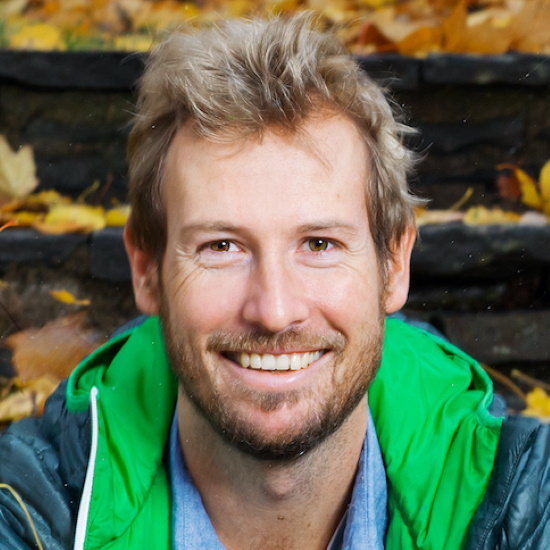
Professor Sebastiaan Swart, University of Gothenburg, Sweden

Professor Sebastiaan Swart, University of Gothenburg, SwedenSwart’s research interests are focused on understanding the circulation and dynamics in the open ocean, particularly in the Southern Ocean. As a Wallenberg Academy Fellow at the University of Gothenburg, Sweden, he is investigating the main physical processes of the upper ocean and how these impact both regional and global climate. He employs remotely sensed satellite data and in situ observations from gliders, ships, profiling floats and autonomous surface vehicles in remote & harsh ocean environments to test hypotheses related to submesoscale features, mixed layer processes and their impact on air-sea fluxes. He is currently Co-Chair of the SCOR WG and UN Decade Program OASIS - Developing an Observing Air-Sea Interactions Strategy. |
| 13:45 - 14:00 | Discussion |
| 14:00 - 14:30 | Tea |
| 14:30 - 15:00 |
New understanding of air-sea fluxes and their role in water mass formation
Subantarctic Mode Water (SAMW) formation and subduction plays a key role in uptake and storage of anthropogenic heat and carbon in the Southern Ocean. Wintertime surface ocean heat loss is the leading-order driver of SAMW formation and its interannual variability, but has been historically poorly observed. Recent observations from moorings and floats, and novel water mass transformation analysis, are beginning to untangle the drivers of interannual variability in wintertime ocean heat loss and SAMW formation, and reveal striking regional spatial variability. In this talk Dr Tamsitt will summarise recent advances in understanding of the spatial and temporal variability in heat flux and SAMW formation and the implications for uptake and transport of anthropogenic carbon into the interior ocean. Finally, based on this current state of knowledge Dr Tamsitt will discuss directions for future research including observational and modeling priorities. 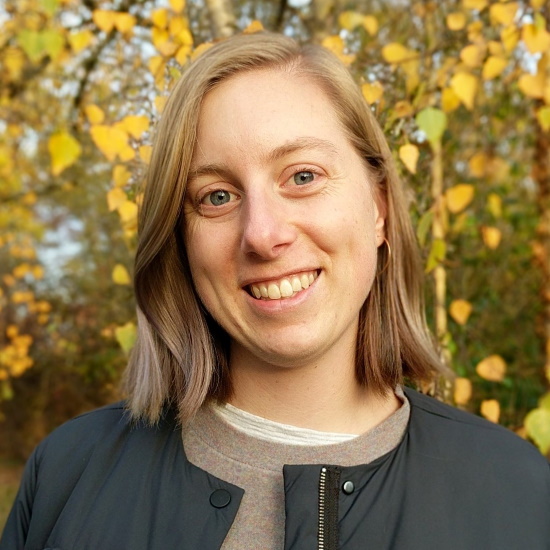
Dr Veronica Tamsitt, University of South Florida, USA

Dr Veronica Tamsitt, University of South Florida, USAVeronica Tamsitt is a scientific researcher at the University of South Florida in Nancy William's ocean biogeochemistry group. Veronica completed her PhD in 2018 at the Scripps Institution of Oceanography on the three-dimensional overturning circulation in the Southern Ocean. Veronica was a Postdoctoral Researcher at the Centre for Southern Hemisphere Oceans Research at University of New South Wales and CSIRO based in Hobart from 2018 - 2021. Veronica's research interests lie in understanding the ocean circulation and its impact on climate using a combination of modeling, ship-based, and autonomous observations. She is particularly interested in using Lagrangian particle tracking methods in high-resolution models to understand pathways and timescales of ocean circulation and tracer transport, and understanding physical drivers of variability in air-sea fluxes of heat and carbon in the Southern Ocean. |
| 15:00 - 15:15 | Discussion |
| 15:15 - 15:45 |
Breaking through the wall of CO2 flux uncertainties
In recent years, the community effort of collecting and synthesising surface ocean CO2 observations let to the development of a new observation-based estimates of the ocean carbon sink. Filling the remaining data gaps, these estimates - predominantly depending on machine learning methods - are capable of resolving seasonal, interannual and decadal variations of the air-sea CO2 exchange, highlighting in particular the role of low frequency variability in the Southern Ocean. As fast as these new estimates have risen, they may have already reached their limits: A recent study concluded, that irrespective of the machine learning method used, there remains an irreducible bias in the CO2 reconstruction linked to limitations of the measurement network which the authors called 'the wall'. Breaking through this 'wall', and in particular in the strongly undersampled Southern Ocean, requires on the one hand the continuation of ongoing autonomous measurement efforts, but on the other hand, new measurement networks, that are established through collaborations with sailors participating in round-the-globe racing events, regularly circumnavigating the Southern Ocean. Here, Dr Landschützer will present CO2 observations made during the Vendée Globe race on board the sail yacht Seaexplorer in the Southern Ocean and discuss their implications for science. Additionally, Dr Landschützer will present new efforts using machine learning tools to reconstruct the dissolved inorganic carbon content of the interior ocean and how they can help constrain the air-sea CO2 fluxes at the surface as a second independent line of evidence. 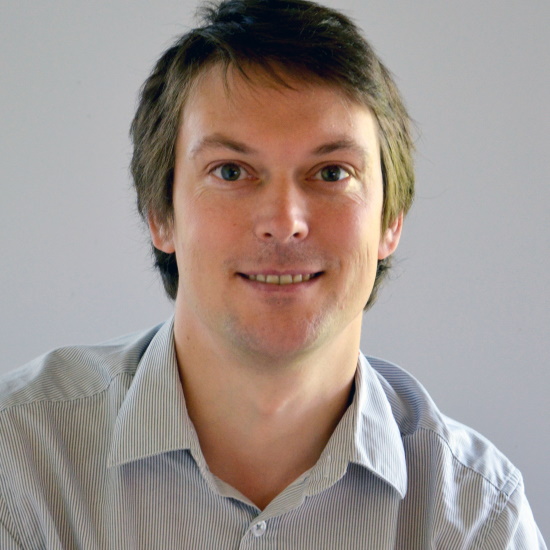
Dr Peter Landschützer, Max Planck Institute for Meteorology, Germany

Dr Peter Landschützer, Max Planck Institute for Meteorology, GermanyPeter Landschützer received his PhD at the School of Environmental Sciences at the University of East Anglia, where he developed a novel 2-step neural network interpolation technique, which he refined during his post-doc at the Swiss Federal Institute of Technology in Switzerland. Currently, he is Research Group Leader of the ’Observations, Analysis and Synthesis’ group at the Max Planck Institute for Meteorology in Hamburg, Germany. His research focuses on the collection of in-situ CO2 measurements and the combination measurements with machine learning techniques to quantify the ocean carbon sink, its uncertainty and its evolution in time. |
| 15:45 - 16:00 | Discussion |
| 16:00 - 17:00 | Poster session |
Chair

Dr Jean-Baptiste Sallée, LOCEAN-IPSL, CNRS, Sorbonne Université, France

Dr Jean-Baptiste Sallée, LOCEAN-IPSL, CNRS, Sorbonne Université, France
Dr Jean-Baptiste Sallée is a Physical Oceanographer and Climate Scientist working for the French national research organisation CNRS and he is based at Sorbonne University in Paris in the department LOCEAN-IPSL. Jean-Baptiste Sallée and his group are interested in the dynamics of the ocean and climate with active research efforts on the study of the Southern Ocean surface layer and its impact on the global ocean circulation. His research mostly focuses on the observational connection between the ocean surface and the deep ocean interior, with particular emphasises on heat, salt and anthropogenic carbon sequestration in the Southern Ocean. In the past five years, Jean-Baptiste Sallée has been a member of the Southern Ocean Observation System (SOOS), a lead author for the sixth Assessment Report of the International Panel for Climate Change (IPCC) and has led a number of large research consortium investigating the functioning of the Southern Ocean.
| 08:00 - 08:25 |
The three-dimensional carbon cycle of the Southern Ocean: Insights from Biogeochemical-Argo float observations
Although the circulation of the Southern Ocean has traditionally been viewed through a zonally-averaged framework, research in recent years has emphasized the importance of standing meanders and associated zonal asymmetries in the Antarctic Circumpolar Current. These meanders, which result from topography-mean flow interactions, create regions with vigorous variability at meso- to submeso-scales, indicated by elevated eddy kinetic energy. These hotspots of eddy activity are known to influence the circulation and frontal structure of the Southern Ocean, yet their influence on the movement of carbon through this key region remains poorly understood. In this talk, Dr Gray will present analysis of seven years of in situ observations collected by Biogeochemical-Argo floats deployed by the Southern Ocean Carbon and Climate Observations and Modeling project. These data, which have unprecedented spatial and temporal coverage, suggest that regions of high eddy kinetic energy are associated with enhanced ventilation between the surface mixed layer and the ocean interior. The impact of this increased exchange on the spatial variability of the Southern Ocean carbon cycle and air-sea exchange will be discussed. 
Professor Alison Gray, University of Washington, USA

Professor Alison Gray, University of Washington, USAAlison Gray is an oceanographer working to advance scientific understanding of the large-scale physics and chemistry of the ocean and the impacts on Earth’s climate and ecosystems. Her research primarily focuses on observing the global ocean using autonomous instruments that measure physical and biogeochemical ocean properties and analysing those observations using state-of-the-art methods from statistics and data science. An Assistant Professor in the School of Oceanography at the University of Washington, she enjoys teaching and mentoring undergraduate and graduate students in oceanography and data analysis. Previously, Dr Gray was at Princeton University, where she studied the circulation and carbon cycle of the Southern Ocean as a National Oceanographic and Atmospheric Administration Climate and Global Change Postdoctoral Fellow. She completed her graduate work at the University of Washington, where she received an MS and a PhD in physical oceanography, as well as an MS in applied mathematics. |
|---|---|
| 08:25 - 08:35 |
Discussion
|
| 08:35 - 09:00 |
Insight into the role of upper ocean primary production and biogeochemical processes in the southern ocean carbon cycle
Southern Ocean net primary production consumes upwelled nutrients and maintains interior pools of respired carbon that contribute to the regional carbon cycle. Climate projections confidently predict that Southern Ocean net primary production will increase in the future in response to changing availability of the micronutrient iron. However, manganese, which is bio-essential is also an important regulator of upper ocean productivity and the biological carbon pump, but is neglected by earth system models. This suggests that we have an incomplete picture of the drivers of Southern Ocean primary production, which questions the confidence across model projections and the response of the region to a changing climate. Ultimately, Southern Ocean net primary production is controlled by a unique set of controls that are dissimilar to those at lower latitudes and have shaped the evolution of Antarctic phytoplankton since the opening of Drake Passage. Addressing these knowledge gaps across the links between Southern Ocean physics and biogeochemistry is crucial for providing realistic assessments of future change. 
Professor Alessandro Tagliabue, University of Liverpool, UK

Professor Alessandro Tagliabue, University of Liverpool, UKProfessor Tagliabue is a Professor at the University of Liverpool and an ocean biogeochemist, interested in how the cycling of resources in the sea affects biological activity and vice-versa. He is particularly interested in trace micronutrients and how they interact together to shape primary production, ecosystem structure and their response to global change. His science links numerical models, at both global and idealised scales, with both fieldwork and synthesis of datasets. Professor Tagliabue is heavily involved in the international GEOTRACES programme, was a lead author on the IPCC Special Report on Oceans and Cryosphere in a Changing Climate and is a member of the governing council of the UK Challenger Society for Marine Science. He is also UK Chair for SCOR and sit on the Royal Society Global Environment Research Committee.
|
| 09:00 - 09:10 | Discussion |
| 09:10 - 09:35 |
The Sensitivity of the Southern Ocean Biological Carbon Pump to Climate Change
Arguably the most important scientific endeavour to date is the ability to understand and predict future ecosystems states, system-scale feedbacks and the emergence of abrupt change and tipping points to the carbon-climate system for the implementation of effective policy-driven mitigations. The Southern Ocean (SO) is disproportionately more important when it comes to buffering the impacts of climate change, taking up 50% of the oceanic uptake of CO2 (Gruber et al, 2019; Gregor et al, 2019) and 75% of the excess heat generated by anthropogenic CO2 (Frolicher et al, 2015). SO phytoplankton primary production (PP) plays an important role in carbon uptake and biogeochemical cycling by exporting organic material into the ocean's interior regulating nutrient supply to thermocline waters, which in turn drives low latitude PP and carbon export (Sarmiento et al, 2004). Quantifying the strength and efficiency of the biological carbon pump (BCP) and its sensitivity to predicted changes in the Earth’s climate is fundamental to our ability to predict long term changes in the global carbon cycle and by extension, the impact of continued anthropogenic perturbation of atmospheric CO2 levels (Henson et al, 2011; Laufkotter et al, 2017). There is little agreement however on Earth System Models projections of the climate sensitivity of the SO BCP with a lack of consensus in even the direction of predicted change (eg Hauck et al, 2015), highlighting a gap in our understanding and ability to accurately represent a major planetary carbon flux. The Southern Ocean Carbon-Climate Observatory (SOCCO) based at the CSIR in Cape Town, South Africa aims to address some of these knowledge gaps in order to shed light on how future conditions may impact phytoplankton ecophysiology and the ocean’s biogeochemical cycling of key nutrients. This presentation will share their approach to addressing this challenge together with some key recent findings that address the sensitivity of the SO BCP to climate change. 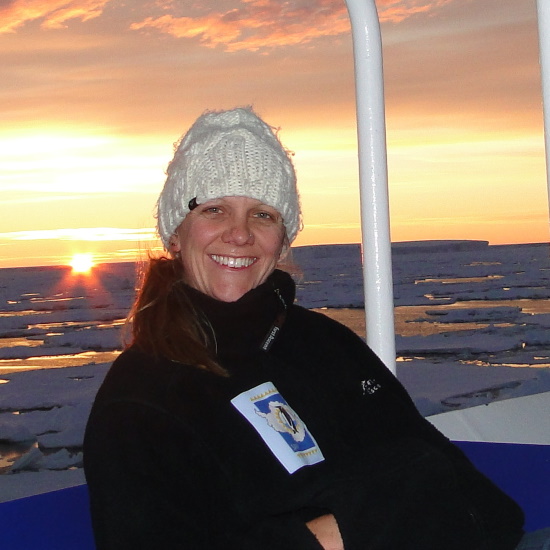
Dr Sandy Thomalla, Southern Ocean Carbon and Climate Observatory (SOCCO), CSIR, South Africa

Dr Sandy Thomalla, Southern Ocean Carbon and Climate Observatory (SOCCO), CSIR, South AfricaSandy Thomalla is a Principal Scientist and Research Group Leader of the Southern Ocean Carbon - Climate Observatory (SOCCO) at the CSIR, in Cape Town, South Africa. She obtained her PhD from the University of Cape Town in association with the National Oceanography Centre, Southampton, UK. Her research focuses primarily on understanding the biological carbon pump through a range of observational approaches that include measurements of primary production, photophysiology, carbon export, satellite ocean colour and in situ bio-optics. A key objective is to examine the modes of variability in ecosystem physical drivers towards a better process understanding of biogeochemical responses, particularly the Biological Carbon Pump and its sensitivity to climate. |
| 09:35 - 09:45 | Discussion |
| 09:45 - 10:15 | Coffee |
| 10:15 - 10:40 |
Characterising the Southern Ocean carbon sink 1985 to 2018: a synthesis in the framework of the RECCAP2 project
The Southern Ocean chapter of RECCAP2, which is the Global Carbon Project’s second systematic study on Regional Carbon Cycle Assessment and Processes, assesses the Southern Ocean carbon sink 1985-2018 from ocean biogeochemical models, surface pCO2-based data products, and data-assimilated models. This analysis quantifies annual and seasonal air-sea CO2 fluxes on the level of large-scale ocean biomes. In contrast to previous comparisons, the researchers find surprisingly good agreement between the ensemble mean of models and data-products and one data-assimilated regional model on a contemporary CO2 uptake of about 0.75 PgC/yr between 1985 and 2018. They mainly attribute this change to the use of an updated data set for the river flux adjustments to account for the different components of the CO2 flux measured by different methods, although differences in contributing models and data-products as well as in the defined boundary of the Southern Ocean may contribute as well. Admittedly, the models have a large spread with a mean uptake between 0.25 and 1.1 PgC/yr. The model spread is to first order explained by a diverse representation of the natural CO2 fluxes. The modelled anthropogenic CO2 uptake is more congruent, although comparison with observed interior ocean anthropogenic carbon accumulation points to an underestimation by most models. The researchers' assessment further confirms the discrepancies among data streams on the magnitude of winter outgassing of CO2. However, across latitude, model spread in multi-year averaged summer CO2 uptake is larger than in winter pointing to difficulties capturing the delicate balance between physical and biological processes. 
Dr Judith Hauck, Alfred Wegener Institute, Helmholtz Centre for Polar and Marine Research, Germany

Dr Judith Hauck, Alfred Wegener Institute, Helmholtz Centre for Polar and Marine Research, GermanyJudith studied marine environmental sciences in Oldenburg in Germany, before moving to the Alfred Wegener Institute, Helmholtz Centre for Polar and Marine Research for her PhD. For her thesis entitled 'Processes in the Southern Ocean carbon cycle: Dissolution of carbonate sediments and inter-annual variability of carbon fluxes' she was awarded the Annette-Barthelt Award for the best PhD thesis in the field of marine sciences in Germany. She is now head of the Helmholtz Young Investigator Group for Marine Carbon and Ecosystem Feedbacks in the Earth System (MarESys), as well as the Deputy Head of Marine Biogeosciences at the Alfred Wegener Institute. She is a member of several committees looking to assess and report on the global carbon budget and ocean carbon research. |
| 10:40 - 10:50 | Discussion |
| 10:50 - 11:15 |
What is the Seasonal Cycle of pCO2 in the Southern Ocean?
Over the past decade, but especially in the past 5 years, the ocean surface CO2 flux and pCO2 observational community has made important advances in constraints for the interannual variability of the seasonal cycle of pCO2 and FCO2 in the Southern Ocean. These seasonal cycle constraints for pCO2 have improved confidence in model derived variability and trends of FCO2 as well as the mean annual contribution of the Southern Ocean to the global carbon budget. New autonomous platforms (Gliders and Floats) have enabled further advances towards both addressing the spatial and temporal observational gaps in ocean pCO2 as well as opened the door to investigate intra-seasonal variability and the contribution they make to a new understanding of the seasonal variability, its mechanisms, and the impact on the mean annual flux. Here the researchers present some of the key results from the SOSCEx series of integrated glider experiments 2013-2019 conducted by the South African SOCCO programme in both the Sub-Antarctic and the Polar Upwelling Zones of the SE Atlantic Ocean. They use a metric – the Seasonal Cycle Reproducibility (SCR) to show how the Southern Ocean comprises a mosaic of seasonal to synoptic modes of variability. Their observational results point towards an unexpected importance of intraseasonal modes of variability of pCO2 and they also propose the mechanistic basis for this variability and contrast how forced models of the Southern Ocean reflect these synoptic modes. They also analyse the implications of seasonally biased ship observations as well as intraseasonal modes on the reconstruction of pCO2 variability in the Southern Ocean. 
Dr Pedro Monteiro, CSIR-CHPC, South Africa

Dr Pedro Monteiro, CSIR-CHPC, South AfricaDr Pedro M S Monteiro is a Chief Oceanographer at CSIR in South Africa in the Southern Ocean Carbon-Climate Observatory (SOCCO). He has a special interest in understanding the processes and dynamics that link ocean physics to CO2 variability on synoptic to interannual scales and using this to contribute towards reducing the uncertainties and biases in oceanCO2 reconstructions. The use of high-resolution numerical modelling and ocean robotics as experimental platforms, to examine the scale sensitivities of Southern Ocean coupled physics – CO2 to climate variability and change, is a key focus. He was a Coordinating Lead Author for the Carbon chapter 5 in AR6-WG1 and a member of the Joint Steering Committee of the WCRP. |
| 11:15 - 11:30 | Discussion |
Chair

Dr Andrew Meijers, British Antarctic Survey, UK

Dr Andrew Meijers, British Antarctic Survey, UK
Dr Andrew Meijers is the Deputy Leader of the British Antarctic Survey's Polar Oceans programme. His research centers around large scale Southern Ocean dynamics and water mass evolution, with an emphasis on its representation within CMIP class coupled climate models. He was the PI of the large UK ORCHESTRA programme and its extension ENCORE, examining the uptake, storage and export of heat and carbon in the Southern Ocean. He oversaw the combined efforts of scientists from six UK research centres and a large observational and modelling programme over six years. He has undertaken numerous research voyages in the Southern Ocean, often as Principal Scientist, and looks forward to returning to the field soon!
| 12:30 - 13:00 |
Southern Ocean contribution to the global carbon budget imbalance based on multiple constraints
The balance of known emissions and sinks of CO2 reveal a gap in the assessment of global carbon flows. The “carbon budget imbalance” represents the frontier in carbon cycle research. This presentation will examine the potential role of the Southern Ocean to account for some of the carbon budget imbalance, building largely on the work of the SONATA (Southern OceaN optimal Approach To Assess the carbon state, variability and climatic drivers) project. It will examine the coherence of estimates based on atmospheric and oceanic observations and those based on process models and draw the emerging patterns of variability. Overall, the available evidence suggests that climate variability was inducing a decrease in the ocean CO2 sink during the period 1990 to approximately 2010, a trend that is corroborated here with the identification of a climate fingerprint for DIC in the ocean interior and would slightly reduce the carbon budget imbalance in this period. However, in the past decade, a strong increase in the Southern Ocean CO2 sink inferred by ocean data-products is difficult to reconcile with atmospheric observations, process models, and the carbon budget imbalance. The SONATA project shows that multiple constraints are a powerful tool to keep track of trends and variability in the Southern Ocean CO2 sink. 
Professor Corinne Le Quéré CBE FRS, University of East Anglia, UK

Professor Corinne Le Quéré CBE FRS, University of East Anglia, UKProfessor Corinne Le Quéré FRS CBE, is Royal Society Research Professor at the University of East Anglia, where she conducts research on the interactions between the carbon cycle and climate change, particularly those mediated by the world’s oceans. She leads two projects in the NERC’s programme on the Role of the Southern Ocean in the Earth System (RoSES), one examining Southern Ocean CO2 variability in recent decades, one exploring its evolution this century. More broadly, she spearheaded the development of marine carbon-cycle models with new ways to represent plankton diversity and ecology. She also led for over a decade the annual update of the ‘global carbon budget’, an international effort to keep track of global carbon emissions and their fate in the environment, and authored three assessment reports of the Intergovernmental Panel on Climate Change (IPCC). |
|---|---|
| 13:00 - 13:15 | Discussion |
| 13:15 - 13:45 |
The effect of the Southern Ocean on the global climate response to carbon emissions
The role of the Southern Ocean is discussed in terms of its contribution to the global climate response to carbon emissions based upon Earth system model projections following a 1% rise in atmospheric CO2. The Southern Ocean plays a key role in sequestering heat and carbon from the atmosphere; this response is not due to enhanced local storage of heat and carbon, but rather due to the northward transport into the other ocean basins. The local thermal response over the Southern Ocean is strongly affected by physical climate feedbacks, particularly involving clouds and surface albedo, where a reduction in clouds and sea ice acts to enhance surface warming. This combination of heat and carbon uptake in the Southern Ocean, and the physical feedbacks acting over this region, all contribute to the global climate response. Surface warming projections are understood in terms of two key global climate metrics: the slope of surface warming versus cumulative carbon emissions (called the Transient Climate Response to Emissions) and whether surface warming continues when emissions ceases (called the Zero Emissions Commitment). Both of these climate metrics are controlled by partially-competing thermal and carbon mechanisms, involving how heat and carbon are sequestered from the atmosphere, and the extent that radiative forcing leads to surface warming or an increase in ocean heat storage. The researchers' analysis of Earth system models reveals a wide inter-model spread in these climate metrics, which are particularly driven by differences in the evolution in physical climate feedbacks and the ocean uptake of heat, together by differences in the terrestrial carbon cycle and a lesser extent by the ocean uptake of carbon. The Southern Ocean is playing an important role in determining these global climate metrics through both the temporal change in regional physical feedbacks and its enhanced sequestration of heat and carbon. 
Professor Ric Williams, University of Liverpool, UK

Professor Ric Williams, University of Liverpool, UKRic Williams is a Professor in Ocean Sciences at University of Liverpool. His climate research focuses on how surface warming increases linearly with carbon emissions and how there may be delayed warming even after carbon emissions cease. His ocean research focuses on how climate projections for heat and carbon storage differ from each other, and the coupling between surface temperature, overturning and cloud feedbacks. Ric Williams obtained a Physics degree at Bristol University, a master’s degree in Atmospheric Physics at Imperial College and a PhD in Physical Oceanography at University of East Anglia. He has worked as researcher at Imperial College and won a 2-year NOAA fellowship at Massachusetts Institute of Technology, USA, and then moved to University of Liverpool. He has over 95 peer-reviewed publications and a textbook on Ocean Dynamics and the Carbon Cycle. He is currently the co-Director of the University of Liverpool research theme: Climate Futures. |
| 13:45 - 14:00 | Discussion |
| 14:00 - 14:30 | Tea |
| 14:30 - 15:00 |
Prediction of future Southern Ocean carbon and heat uptake
Strong winds in Southern Ocean storms drive significant, two-way air-sea exchanges of carbon and heat. These spatially and temporally varying fluxes are vital to Earth’s climate system; this is especially true during the ongoing transient response to anthropogenic forcing where the ocean moderates the pace of carbon and heat increases in the atmosphere. Evaluating the ability of fully coupled climate models to accurately simulate the circulation and biogeochemistry relative to observations is crucial for closing the global carbon budget and for building confidence in climate model projections and advancing model fidelity. The lack of historical observations of key metrics associated with the circulation and biogeochemistry has led to large disagreement among Earth system model simulations of the Southern Ocean, but the recent revolutions in autonomous ocean float technology and sensor design allow us to estimate ocean carbon inventory changes in near real time. This shift from decadal surveys to a continual global ocean biogeochemistry data stream, in conjunction with satellite wind measurements and the latest Earth system models has moved ocean carbon into our operational oceanographic toolkit which is critical for enabling global carbon budget constraints and carbon accounting. Unfortunately, the current satellite constellation that remotely senses winds temporally under-samples the growing storms and the higher winds within them, leading to potentially large biases in Southern Ocean wind re-analyses and the carbon and heat fluxes derived from them. Evidence from a range of sources indicates that the wind speeds that drive Southern Ocean fluxes are increasing. Using the Biogeochemical Southern Ocean State Estimate to explore the effects of a 20% increase in wind speed on the air-sea carbon fluxes over the Southern Ocean, the researchers explore the new near-real-time observing system requirements for prediction of our changing ocean and climate system. 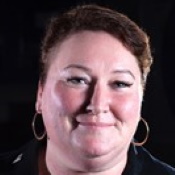
Professor Joellen Russell, University of Arizona, USA

Professor Joellen Russell, University of Arizona, USADr Joellen Russell is an oceanographer, climate scientist and University Distinguished Professor at the University of Arizona. Professor Russell uses robot floats, supercomputers and satellites to observe and predict the ocean’s role in climate and the carbon cycle. Professor Russell is the lead for the modeling theme of the Southern Ocean Carbon and Climate Observations and Modeling project (SOCCOM) including its Southern Ocean Model Intercomparison Project (SOMIP). She currently serves as Co-Chair of the NOAA Science Advisory Board’s Climate Working Group and on the National Center for Atmospheric Research’s Community Earth System Model Advisory Board. Professor Russell is one of the 14 scientists behind an amicus curiae brief supporting the plaintiff in the historic 2007 U.S. Supreme Court decision on carbon dioxide emissions and climate change, Commonwealth of Massachusetts, et al v U.S. Environmental Protection Agency. Before joining UA, Dr Russell was a Research Scientist at Princeton University and the National Ocean and Atmospheric Administration’s Geophysical Fluid Dynamics Laboratory (NOAA/GFDL). She received her AB in Environmental Geoscience from Harvard and her PhD in Oceanography from Scripps Institution of Oceanography, University of California, San Diego. |
| 15:00 - 15:15 | Discussion |
| 15:15 - 16:00 | Panel discussion |
